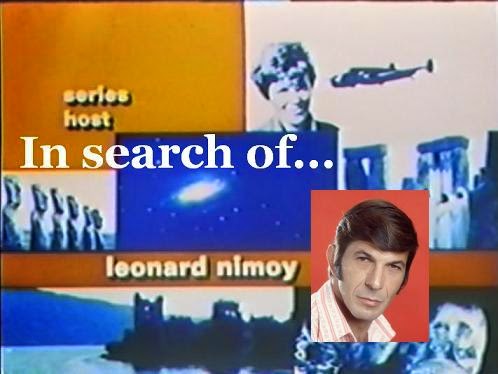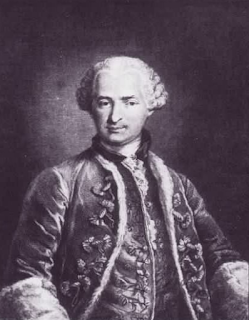With all of these episodes I try to not search on the internet for any information about the topic or te particular episode of the show I'm about to watch. I want to approach each episode with only whatever information I have in my head. So when I saw this title, I wasn't completely sure what it referred to. I think I remember hearing that there might be a lake monster much like the Loch Ness Monster in Florida, and this might be what the Ogopogo Monster is? Other than that, I have no information or preconceived notions. I never heard much about this Florida monster, so I don't even know how legitimate it is?
We start off with a harrowing scene reenacted on Lake Okanagan in British Columbia, CA. In July of 1977 Erin Neely was water skiing and took a spill. Apparently she was attached by a strange creature. Neely was rescued and lived to tell the tale.
Neely described the creature as being a huge serpent-like monster. As it turns out, there have been others who have witnessed a monster in this lake. I guess the Florida connection is out the window? (Note: I googled "Florida lake monster" after watching this episode and I discovered what I was thinking of was the "Okeechobee Monster")
For those few people who have never heard of the Loch Ness Monster, Nimoy takes a few moments to give a brief overview. Apparently both lakes have many similarities, including lying on the same line of latitude. Nimoy wonders how it is possible for a creature to exist in this lake unknown to science.
He points out how scientists discovered the coelacanth 40 years earlier. Not only was it thought to be long since extinct, but it turned out to be much larger than previously thought.
 |
| (Okanagan Lake) |
Nimoy tells us about the Okanagan people who lived in the area for centuries. They have their own legends about the lake and it includes stories of a large creature who lives in the lake. We are taken to a tribal ceremony around a fire and one of the members tells about the legends. He explains that it is a serpent and that no one would attempt to cross the lake without making an offering to the serpent. Bad things often happened to those who did not appease the hungry monster.
Next we are taken to the Kelowna Museum and introduced to its curator, Ursula Sertes. The museum features various artifacts from the history of the Okangan people. Sertes has studies the culture for many years. She describes the legend of the lake monster and explains that it was called "Ogopogo" by the Okanagan people. Nimoy talks to a local nature writer who tells about talking to local people and hearing this name "Ogopogo". She was surprised to find they believed in the creature and had many stories to tell that they claimed to be truthful about the sea snake. Next we meet a couple who witnessed the creature in the lake. Harry and Betty Stanes have spent a good deal of time on the lake. They tell a frightening story of an encounter with the monster. They describe the creature as being very large, and had fins on top. They were concerned it would tip the boat. Jeffrey Sherwin also tells a story of an encounter fishing on a boat and seeing two humps sticking out of the water. He watched it for a full three minutes. He believes it was Ogopogo. Ed Fletcher and his daughter Jill also report seeing the creature. All descriptions seem to indicate a very big snake-like creature. The Fletchers were the ones from the start of the episode who were driving their boat when Erin Neely had her encounter. Ed has pictures and this is the best one!
Nimoy claims this is not a wave and no other explanation exists for what it is. Maybe that's true, but it doesn't look like a sea serpent to me. Because of these photos, the "In Search Of... " camera team is going to explore below the lake's surface. Local divers are accompanying the camera team. We are cautioned that because the lake is so large, the chances of getting an image of something are slim. This feels like they don't end up seeing anything and want to make sure we understand it doesn't mean the monster doesn't exist. They decide to look in the area where Erin Neely reported her encounter. They find nothing, but decide to announce a meeting to hear about local encounters and advertise the meeting in the local press. They were amazed at the number of people who showed up.
They take a few minutes to let us hear some sighting stories from the locals. The people all seem believable and seem to have been spooked by what they saw. They also all seem to have seen a large snake-like creature. Its also clear to me these people are well aware of the Ogopogo legends. Sometimes you see what you want to see? Nimoy hints at this by pointing out how the shimmering on the lake can be deceptive at times. But not everyone in the area believes in Ogopogo! Someone tied together 3 tires and set them a float on the lake. No surprise, they looked like 3 humps of a sea serpent. For a moment, the camera team thought they were seeing the monster. I'm sure they were pretty upset when they saw it was a hoax!
Nimoy gives acknowledgement to the power of deception and illusion, but he claims there are too many unanswered questions to dismiss Ogopogo completely. Next we are taken to a scientist at an aquarium who is talking with Ed Fletcher about the features he saw on the creature. Nimoy compares some of these features to known sea animals like eels and fish. The camera team decides to try and dive again, but in a different location. Once again, the team comes up empty. They have held the best evidence of Ogopogo until near the end of the episode. We are shown what is known as the "Folden film". Grainy, blurry, and just typical 70's quality, the film is indeed the best evidence I've seen. However, its hard to really see what is happening in the film. It could be a large serpent, or it could be something else entirely different (like tires). Next we meet Dr. Willard Bascom who speculates on the kind of conditions necessary for a creature like that to develop. He is skeptical that an animal that large could exist in a lake like Okanagan.
"Whether the creature is something known or unknown, its difficult to ignore these pictures and the large number of sightings of a creature scientists cannot explain. What it is we still don't know. Perhaps someday a scientific expedition will tell us? In the meantime, the Folden film provides us with the most conclusive evidence that something very large lives in Lake Okanagan."
I'm not buying it one bit. There are legends and the people who see things are influenced by the stories. A grainy film in the 70's might have been creepy, but that stuff doesn't cut it anymore. Where are the modern images of this monster? Garbage I say! I didn't think this was particularly interesting. I wasn't insulted like I was with a few episodes, but this just felt tired and lazy. I hope they find a way to turn things around!
You can watch this episode "The Ogopogo Monster" below.



























































